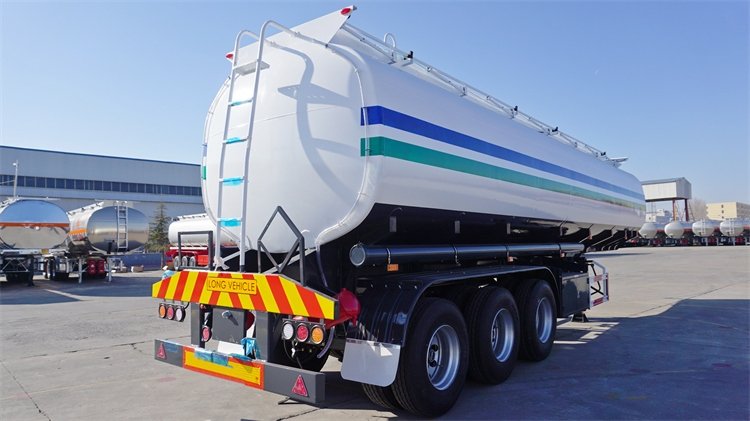In the bustling industrial landscape of Kenya, every business thrives on efficiency, and a key component of that efficiency is choosing the right energy source. For many, that often comes down to a decision between Heavy Fuel Oil (HFO) and Industrial Diesel Oil (IDO). While both are vital petroleum products, they are far from interchangeable. Understanding their distinctions is crucial for cost management, operational efficiency, and environmental responsibility. Let’s break down the top five key differences between these two industrial workhorses.
1. Origin and Composition: The Refining Story
The journey of Heavy Fuel Oil (HFO) and Industrial Diesel Oil (IDO) begins differently at the crude oil refinery, leading to their unique compositions.
- Heavy Fuel Oil (HFO) Origin: Heavy Fuel Oil (HFO) is fundamentally a residual fuel. It’s what’s left over after crude oil has undergone extensive refining to extract lighter, more valuable products like gasoline, kerosene, and standard diesel. Think of it as the thick, heavy residue at the bottom of the barrel. Because of this, Heavy Fuel Oil (HFO) is characterized by a complex molecular structure, containing long-chain hydrocarbons, aromatics, and a higher proportion of impurities such as sulfur, asphaltenes, and heavy metals. This makes Heavy Fuel Oil (HFO) a very dense and viscous substance.
- Industrial Diesel Oil (IDO) Origin: Industrial Diesel Oil (IDO), on the other hand, is typically a blend. It’s created by mixing lighter distillate fuels (like standard diesel or gasoil) with heavier residual components, often including some form of heavy fuel oil. The exact proportions can vary, but the blending process aims to achieve properties that sit between pure diesel and pure Heavy Fuel Oil (HFO). This blend results in a cleaner composition than pure Heavy Fuel Oil (HFO), with lower levels of impurities, including sulfur. This inherent difference in origin directly impacts their physical properties and how they perform as a fuel in Kenya.
2. Physical Properties: Viscosity, Density, and Color
The most immediately apparent differences between Heavy Fuel Oil (HFO) and Industrial Diesel Oil (IDO) lie in their physical characteristics, which dictate their handling and storage requirements in Kenya.
- Viscosity: This is perhaps the most significant distinction. Heavy Fuel Oil (HFO) is extremely viscous. At ambient temperatures, it can be as thick as tar or molasses, making it incredibly difficult to pump and use. To make it flowable for transportation, storage, and especially combustion, Heavy Fuel Oil (HFO) must be pre-heated, sometimes to quite high temperatures. Industrial Diesel Oil (IDO) is less viscous than Heavy Fuel Oil (HFO), though still thicker than standard diesel. While it might still benefit from some heating in colder climates or for optimal flow, it is generally much easier to handle and pump than Heavy Fuel Oil (HFO) without extensive pre-heating infrastructure. This difference in viscosity is a major factor for businesses in Kenya considering their fuel options.
- Density: Heavy Fuel Oil (HFO) is dense, often exceeding 900 kg/m³ at 15°C as per international standards. This high density contributes to its energy content but also its heavy nature. Industrial Diesel Oil (IDO) has a lower density than Heavy Fuel Oil (HFO), again falling between HFO and pure diesel.
- Color: Heavy Fuel Oil (HFO) is typically dark, almost black, due to its heavy components and impurities. Industrial Diesel Oil (IDO) usually has a lighter color, ranging from dark amber to light brown, reflecting its blended nature and lower impurity content compared to Heavy Fuel Oil (HFO).
3. Applications and Target Industries: Who Uses What?
The distinct properties of Heavy Fuel Oil (HFO) and Industrial Diesel Oil (IDO) make them suitable for different industrial applications and sectors in Kenya.
- Heavy Fuel Oil (HFO) Applications: Due to its high energy density and historical affordability, Heavy Fuel Oil (HFO) is predominantly used in large-scale, energy-intensive operations. This includes thermal power generation plants, which rely on Heavy Fuel Oil (HFO) to produce electricity, especially for base load or backup power. Major manufacturing industries like cement factories (for firing kilns), steel mills (for furnaces), and large-scale textile or chemical plants often use Heavy Fuel Oil (HFO) for their enormous heating and steam generation needs. Globally, it remains the primary fuel for large marine vessels (bunker fuel), powering their enormous diesel engines.
- Industrial Diesel Oil (IDO) Applications: Industrial Diesel Oil (IDO) serves a slightly different market segment in Kenya. It’s often preferred by small to medium-scale industries, commercial enterprises, and hospitality settings. Its primary uses include:
- Heating: Fueling commercial and industrial boilers for space heating or process heating in hotels, hospitals, and various manufacturing facilities.
- Power Generation: Powering medium-sized generators for primary or backup electricity supply in factories, institutions, and businesses that don’t require the massive scale of Heavy Fuel Oil (HFO) power plants.
- Steam Generation: Utilized in boilers to produce steam for a variety of industrial processes. Industrial Diesel Oil (IDO) provides a good balance between cost and ease of handling for these applications across Kenya.
4. Cost-Effectiveness and Pricing Dynamics
The pricing of Heavy Fuel Oil (HFO) and Industrial Diesel Oil (IDO) in Kenya is influenced by their refining processes, demand, and quality.
- Heavy Fuel Oil (HFO) Cost: As a residual product, Heavy Fuel Oil (HFO) historically boasts a lower price per unit of energy compared to more refined fuels. Its production cost is lower as it’s what’s left over after extracting higher-value products. This makes Heavy Fuel Oil (HFO) a very attractive option for industries with extremely high fuel consumption, where even small price differences per barrel translate into significant savings. However, the total cost of using Heavy Fuel Oil (HFO) must factor in the additional expenses for heating, specialized storage, and potentially emissions control equipment.
- Industrial Diesel Oil (IDO) Cost: Industrial Diesel Oil (IDO) is generally more expensive than Heavy Fuel Oil (HFO) because it contains a higher proportion of more refined distillate components. However, it is typically less expensive than Automotive Gas Oil (AGO), or standard diesel. This positions Industrial Diesel Oil (IDO) as a middle-ground option, offering a cost advantage over pure diesel while being easier to handle than Heavy Fuel Oil (HFO). For many businesses in Kenya, Industrial Diesel Oil (IDO) provides an optimal balance between upfront fuel cost and operational complexities. Suppliers in Kenya, like Heavycraft Supplies Limited, often highlight their competitive pricing for both Heavy Fuel Oil (HFO) and Industrial Diesel Oil (IDO).
5. Environmental Impact and Regulatory Scrutiny
The environmental footprint is a major differentiating factor, leading to varying regulatory pressures on Heavy Fuel Oil (HFO) and Industrial Diesel Oil (IDO).
- Heavy Fuel Oil (HFO) Environmental Impact: Combustion of Heavy Fuel Oil (HFO) results in higher emissions of pollutants, most notably sulfur oxides (SOx) due to its higher sulfur content. It also produces more particulate matter (PM) and nitrogen oxides (NOx) compared to lighter fuels. These emissions contribute significantly to air pollution, acid rain, and respiratory issues, which are growing concerns globally and in urbanized areas of Kenya. Consequently, Heavy Fuel Oil (HFO) is subject to increasingly stringent environmental regulations, particularly in the marine sector (e.g., IMO 2020 low-sulfur regulations), often requiring expensive scrubbers or a switch to lower-sulfur alternatives.
- Industrial Diesel Oil (IDO) Environmental Impact: Industrial Diesel Oil (IDO) generally has a lower environmental impact than Heavy Fuel Oil (HFO) because of its blended composition and lower impurity levels. While it still produces emissions, the sulfur content is typically lower than in Heavy Fuel Oil (HFO), leading to reduced SOx emissions. Its combustion is also generally cleaner than Heavy Fuel Oil (HFO), though not as clean as pure diesel or natural gas. As environmental consciousness grows in Kenya, the comparatively cleaner burn of Industrial Diesel Oil (IDO) can be an advantage for businesses seeking to minimize their ecological footprint while maintaining cost efficiency.
Conclusion
The choice between Heavy Fuel Oil (HFO) and Industrial Diesel Oil (IDO) is a strategic one for any business in Kenya requiring significant thermal or power energy. Heavy Fuel Oil (HFO) stands out as the dense, highly viscous, and historically more affordable residue ideal for massive industrial applications, yet it comes with significant environmental and handling challenges. Industrial Diesel Oil (IDO), a more manageable blend, offers a valuable middle ground – more expensive than Heavy Fuel Oil (HFO) but cheaper than pure diesel, making it a versatile and cost-effective choice for a broader range of industrial and hospitality settings.
Understanding these top five differences – their origin, physical properties, applications, cost dynamics, and environmental impact – empowers businesses in Kenya to make informed decisions that align with their operational needs, budget constraints, and sustainability goals. As the energy landscape in Kenya continues to evolve, making the right fuel choice remains paramount for thriving in 2025 and beyond.

